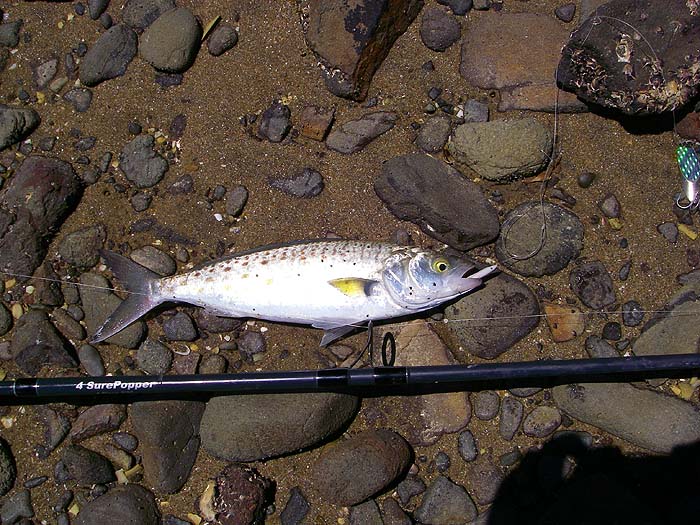

Catch Fish with
Mike Ladle
Information Page
SEA FISHING
For anyone unfamiliar with the site always check the FRESHWATER, SALTWATER and TACK-TICS pages. The Saltwater page now extends back as a record of over several years of (mostly) sea fishing and may be a useful guide as to when to fish. The Freshwater stuff is also up to date now. I keep adding to both. These pages are effectively my diary and the latest will usually be about fishing in the previous day or two. As you see I also add the odd piece from my friends and correspondents if I've not been doing much. The Tactics pages which are chiefly 'how I do it' plus a bit of science are also updated regularly and (I think) worth a read (the earlier ones are mostly tackle and 'how to do it' stuff).
Fishing down under II New Zealand
Following on from our fishing sessions in Australia we returned to New Zealand where we tried a variety of shore and boat fishing with our friends the Bulmers. First things first. Richard and his wife Ana had spent several days in North Island before meeting us to visit Australia. Rich's first fishing session from a sandy beach was a revelation because, much to his surprise, he was into fish immediately. Using a silver Toby, always a good old standby, he caught one kahawai after another from the word go. It turned out to be a bit of a fluke because subsequently he had one or two blanks - typical holiday fishing. However, while spinning with a bibless, silver minnow he did hook and land a flounder (one of several NZ species of Rhombosolea), something that Alan Bulmer tells us he'd never had in many hours of spinning from the shore - typical Richard!
Before leaving for Brisbane our first session with Alan Bulmer was a boat trip on 'Intrigue' with Alan's pals Peter and Bruce, both keen and expert boat anglers. It was fascinating stuff to see how they tackled catching snapper in a few fathoms of water. Peter and Bruce stuck to traditional bait fishing with good sized leads and hefty chunks of pilchard or squid for bait and, overall, they probably caught more keepable snapper than the other three of us put together - not really surprising in view of the fact that two of us were complete novices. Everyone was using pretty light rods and fixed spool reels but while Alan and Richard tried their luck with leadhead soft plastic jigs I experimented with baits on circle hooks, a simple paternoster and small weights. It turned out that the area we fished was absolutely heaving with small snapper. In fact I landed the first keeper but after that only a constant succession of hand sized fish. The jiggers had less bites and fish than the rest of us but the fish tended to be bigger and Rich was chuffed to land his first fish on leadheads. He'll no doubt be using them when he gets back to Brazil. Apart from the fish, the highlight of the session was the gourmet spread that Alan had organised for our lunch. Much better than my usual tuna sandwich.
On retuning to New Zealand we stayed for several days with Alan's mother, Hazel, in Whangamata. What a place. Hazel's house was only minutes from extensive sand and mud flats crossed by deep channels. On our first evening Alan took us to fish the main boat channel. After a five minute plodge across a mixture of glutinous intertidal mud and shells we were casting into the channel. The wind was straight into our faces (which didn't help much) and each of us chose different lures. Alan told us that we were likely to catch kahawai, and we did. They are pretty lively customers and even the small fish give a good account of themselves motoring up and down the channel at speed and occasionally making splashy jumps which often dislodge even the sharpest hook. The following morning we returned to try again. This time the fish were less cooperative but we caught a few, mostly on silver Binsky Blades - chromed, vibrating, sinking lures. In the channel at the mouth of a yacht marina Richard hooked another good fish. We never saw what it was but it took line at speed, zig zagging away under heavy pressure and eventually the hook hold gave way. Kingfish or large kahawai we surmised but we'll never know.
After another day or so Alan had to return home and Richard and I were left to our own devices. We continued to explore the channels - notably the one where Rich lost his big fish - and we tried various lures. The bigger plugs etc. were unproductive (fish too small?) and Richard tried livebaits twice also to no avail. I used a wedge with a dropper carrying a small white Delta/Redgill and the latter proved to be murder for kahawai. Together with Richard's Binsky and Toby, both of which were effective for the kahawai, my rig also produced another small flounder, a scad (yellowtail), a couple of silver trevally, two yellow eyed mullet and a small parore. A good variety of species for beginners.
If you have any comments or questions about fish, methods, tactics or 'what have you!' get in touch with me by sending an E-MAIL to - docladle@hotmail.com
Kahawai.
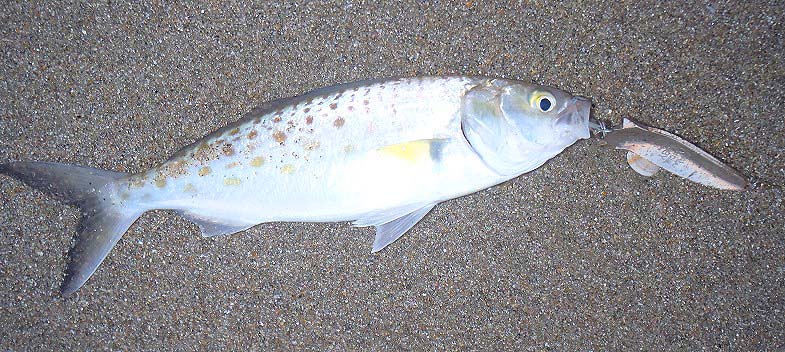
Flounder.
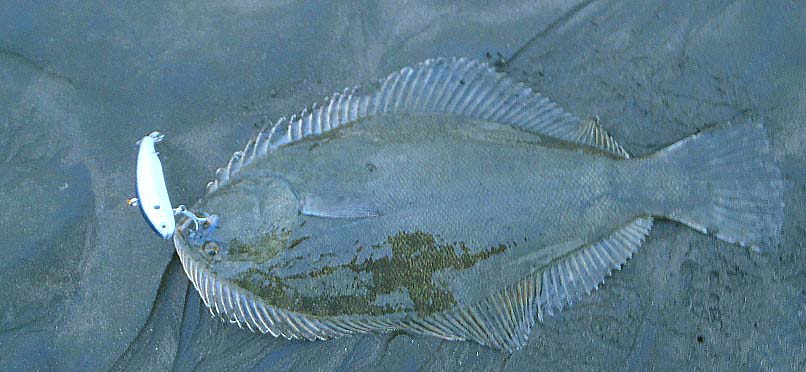
First snapper.
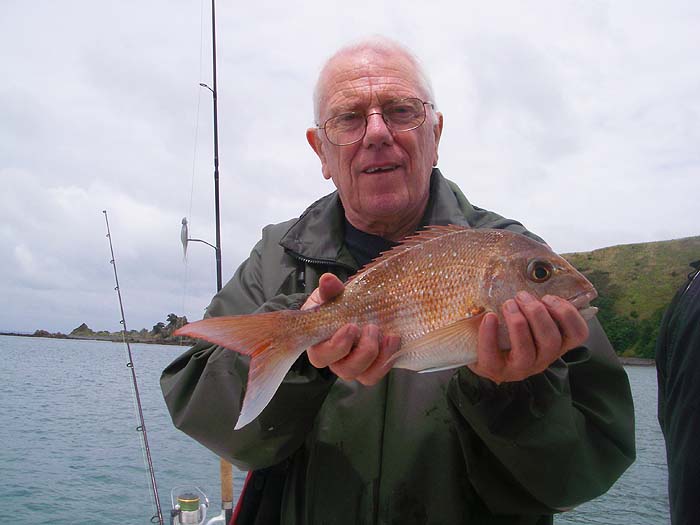
Bait board.
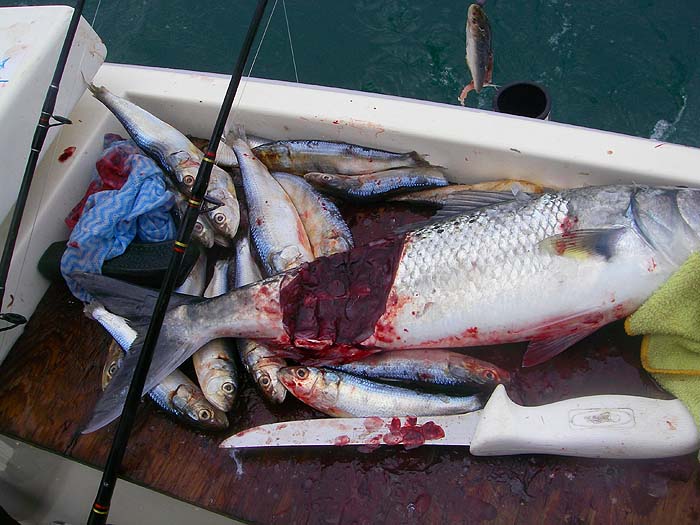
Softbait.
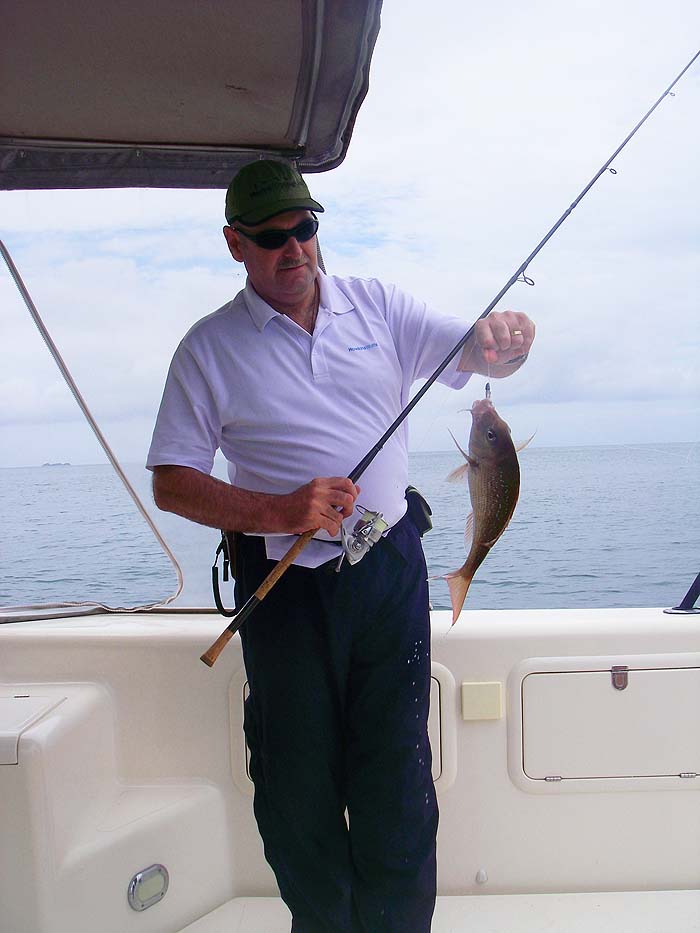
Whangamata.
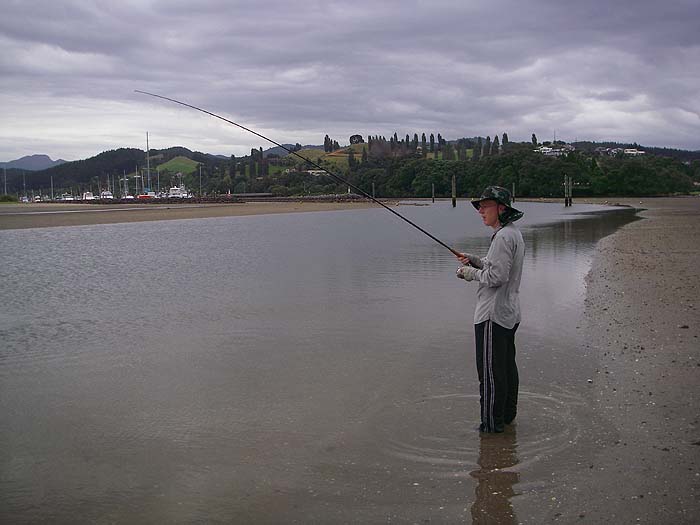
Beached.
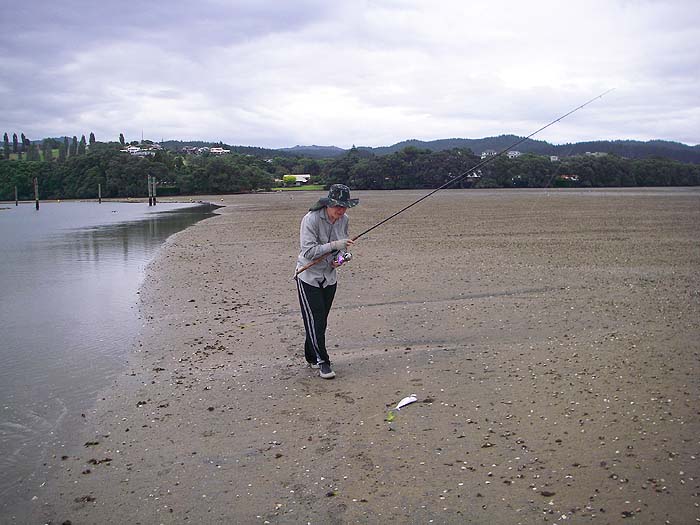
Binsky Blade.
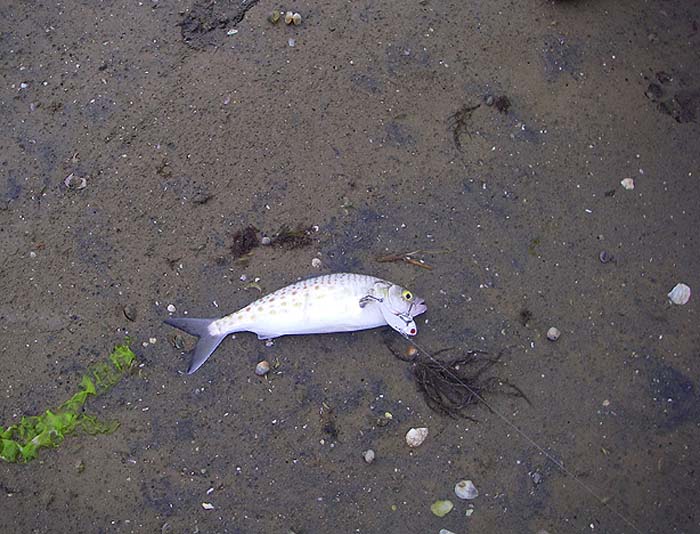
Dropper.
